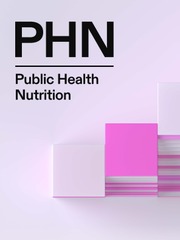No CrossRef data available.
Article contents
Sneak Peek: Food, Waste, and Packaging Characteristics of South Australian School Children’s Lunchboxes
Published online by Cambridge University Press: 03 February 2025
Abstract
To characterise children’s lunchbox contents for food, waste, and packaging.
A cross-sectional study was conducted. Lunchboxes were photographed at two time points on the same day: before first morning break to capture food and packaging and post-lunch break to capture food waste. Contents were coded using an audit tool developed using REDCap.
23 sites across metropolitan Adelaide, South Australia including 14 preschools and 9 primary schools in low (n=8), medium (n=7), and high (n=8) socioeconomic areas.
Preschool (3-5 years) to Grade 7 (6-13 years) school students.
673 lunchboxes were analysed. Grain foods dominated (with at least half of them being discretionary varieties), with 92% of lunchboxes having at least one item from that category, followed by fruits (78%), snacks (62%), dairy (32%), and vegetables (26%). Lunchboxes of preschool children contained more fruits (92% vs 65%; χ2(1)=73.3, P<0.01), vegetables (36% vs 16%; χ2(1)=34.0, P<0.01), and dairy items (45% vs 19%; χ2(1)=53.6, P<0.01), compared to lunchboxes of primary school children. Snack foods were more prevalent in primary school (68%) than preschool (55%; χ2(1)=11.2, P<0.01). Discretionary foods appeared more frequently, and single-use packaging accounted for half (53%) of all packaging in lunchboxes, primarily from snacks and grain foods. Preschool children had less single-use packaging but more food waste. Vegetables were the most wasted food group.
Sandwiches, fruits, and various snacks are typical lunchbox foods, often accompanied by single-use packaging. Considering both health and environmental factors in lunchbox choices could benefit children and sustainability efforts in schools.
- Type
- Research Paper
- Information
- Creative Commons
- This is an Open Access article, distributed under the terms of the Creative Commons Attribution licence (http://creativecommons.org/licenses/by/4.0/), which permits unrestricted re-use, distribution and reproduction, provided the original article is properly cited.
- Copyright
- © The Author(s), 2025. Published by Cambridge University Press on behalf of The Nutrition Society


